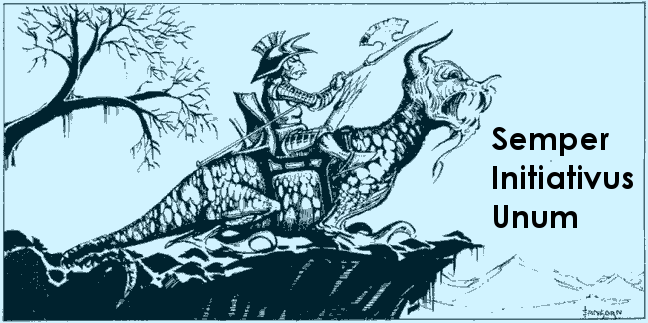Going back to Dave Bowman's list of monster categories in OD&D, one thing that's surprising is the fact that there are so many monsters that turn you to stone. Basilisks, cockatrices, medusae and gorgons - these are four of the more interesting monsters in the original edition for a variety of reasons. The basilisk and cockatrice are both listed, and both are names for the same classic bestiary monster. Likewise anyone familiar with the Greek myth of Medusa knows that she was just one of several horrible sisters called the Gorgons, but the Gorgon in D&D is a bull-like monster with iron scales. The Gorgon of D&D is apparently based on this article which lists a compatible monster, although that creature's breath would be better described as poison than stone.
Being turned to stone in D&D is an essentially reversible condition, since Stone to Flesh was in the earliest edition of the game. This was available at the highest spell level in OD&D - the same level as Death Spell - and of course implies that its opposite was possible. This makes it somewhere between "save or die" and "save or suck" in the hierarchy of D&D conditions.
But what I've been thinking about, and why I chose the picture of Perseus for this blog post, is something that Mike Curtis, author of the Dungeon Alphabet (still one of my favorite OSR books), talked about a bit in an interview recently about player skill: he sees it as failure if he actually has to roll dice. By the time you're making the roll for the saving throw, you've already failed and deserve whatever consequences that come from it, be that poison, death ray, dragon breath, petrification, polymorph, or turning to stone. This ethos is derided by a lot of new school players who don't see that as all that heroic. But again, I refer you to Perseus.
In the myth, Perseus doesn't join up with a bunch of other heroes and go off to slay the Medusa in a fight with her and her servitors. It's Perseus alone, and his brilliantly polished bronze shield, that do the trick. He does his research and figures out a way to subvert the monster's ability. As a kid I was always impressed that he actually puts the head into a sack without looking at it. I think there's something of these myths in the stories of solo adventurers heading into the dungeons and getting through them with a single character, a feat that Rob Kuntz pulled off frequently.
None of that is to say that there's no room for parties. Jason got the Argonauts together to get the Golden Fleece, and the plan of the Trojan Horse couldn't have worked if it were just Odysseus jumping out of it. But I do feel that any definition of heroism has to rank Perseus at least as highly as the heroes who rely more on raw damage to get things done. This is also why I'm a stickler for the method of awarding XP for treasure rather than slaying monsters - it encourages this kind of in-game thinking.
If I get the time in the next few days, I want to follow this up with a related post on a quintessential D&D trope: the statue.


I used a basilisk early on in my current campaign and the search for a wizard to undo this condition has taken over a year and all the characters have gained levels in the mean time... Perhaps I should have planned this better. :)
ReplyDelete